Sarah L. Johnson's Blog, page 79
June 27, 2016
Book review: Daughter of Albion, by Ilka Tampke
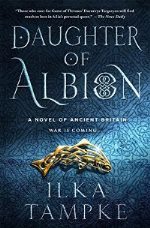 North American cover
North American cover (Thomas Dunne/St. Martin's)
Australian writer Ilka Tampke’s magical debut, Daughter of Albion, has classic genre elements in its blood. It offers the Celtic-tinged feminism of Marion Zimmer Bradley’s The Mists of Avalon, a dark, earthy style reminiscent of Morgan Llywelyn’s The Horse Goddess, and themes of heroic fantasy transposed into a gritty Iron Age England. While some aspects were familiar to me, particularly the growth of its young heroine into a potential leader of her people, its uniqueness lies in the kinship and belief system used by the author – and how these diverse parts form into a coherent whole.
Ailia is a young woman without “skin,” or totem. Her family is unknown; she was discovered as a swaddled newborn on the doorstep of her Tribequeen’s kitchen in the year 28 AD, and raised by a servant called Cookmother. By the time she’s fourteen, Ailia has grown to recognize the disadvantages of her skinlessness, for skin is the very fabric of one’s social existence.
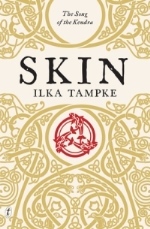 Australian cover
Australian cover (Text Publishing)
Although Ailia may lie with a young man at the Beltane fires (and does), she’s unlikely to marry. Others in her matriarchal tribe aren’t allowed to educate her, either, although she picks up cooking and healing techniques by watching others. Naturally, one of her primary goals is discovering her identity, especially when it becomes clear, by means of a supernatural visitation, that she was chosen for a greater destiny by the Mothers, the ancestral guardians of the Celtic lands. And if ever the people of the Durotriga need a strong leader, it’s now. The Romans are primed to invade, and other tribal kings and queens of Albion are divided on their approach to the would-be conquerors.
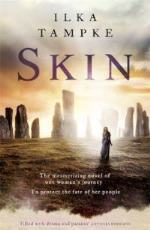 UK cover
UK cover(Hodder Paperbacks)
The geographic setting is deftly realized; Ailia’s homeland of Caer Cad is a hilltown in what’s now known as Somerset, and the great Glastonbury Tor makes several appearances. Ailia has a choice of romantic partners, and each reflects a different direction for her future. (In this regard, there is one unusual and not very appealing sex scene.) Her journey is also a tale of power, revenge, and community.
Fans of traditional historical fiction should be aware that the novel spends much time within the spiritual realms. As a longtime fantasy reader, though, I found it fascinating to see how goings-on in the Mothers’ world influenced events in the “hardworld,” that is, on earth. The dramatic ending, while in tune with history, unfolds swiftly, and, in my view, with an insufficient level of intensity. I also had a sense early on, as is common with fantasy fiction, that this novel was only the beginning of Ailia’s story, and this guess turned out to be right. According to the author’s bio, a sequel is in the works.
Daughter of Albion was published in the US and Canada by Thomas Dunne, an imprint of St. Martin's, in April in hardcover ($25.99/C$36.99). I've also included the covers for the British and original Australian editions, for which the title is different. This is my first 2016 entry for the Australian Women Writers Challenge; I'm way behind but catching up!
Published on June 27, 2016 10:46
June 22, 2016
Loving a legend: Lynn Cullen's Twain's End
Where I'm from, Samuel Clemens – aka Mark Twain – is a greatly admired local figure. I grew up in central Connecticut, five miles from the flamboyant, multi-gabled Mark Twain House in Hartford, and visited there often on school trips. When I interned at a local planetarium in high school, at the time of Halley’s Comet’s return in 1986, we had a Twain interpreter introduce and close the weekly shows. (Clemens had been born with the comet’s arrival in 1835 and died after its subsequent visit in 1910, as he’d predicted.)
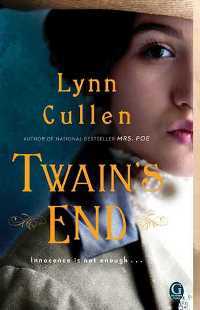 So I was familiar with the basics of his life: his storied childhood in Hannibal, Missouri; his literary and speaking career, and related travels; his marriage to his intelligent wife, Olivia, and their raising of three daughters; and the tragedies and loss that marked his final years.
So I was familiar with the basics of his life: his storied childhood in Hannibal, Missouri; his literary and speaking career, and related travels; his marriage to his intelligent wife, Olivia, and their raising of three daughters; and the tragedies and loss that marked his final years.
His late-in-life relationship with his social secretary, Isabel Lyon, isn’t something I ever learned about then, even though her closeness to him was fodder for gossip during his lifetime. Several recent biographers have dug into primary sources to reveal her impact on his life, but it took considerable effort. History has downplayed her importance, an act which was initiated deliberately. A year before he died, Clemens and his daughter, Clara, set out to blacken her name, but Lyon never defended herself against their outrageous charges. Why?
This is where Lynn Cullen’s Twain’s End comes in. It’s an affecting interpretation of their emotional connection, from their initial meeting in 1889, when she worked as a governess for a neighboring family, through her many years of loyal service, her surprising marriage to Clemens’ business manager, her expulsion from Clemens' household, and his death shortly after.
Although born into wealth, Isabel is a woman of limited means, while under his pen name, Mark Twain, Clemens has become a beloved, world-famous icon. Through her insightful narrative, Cullen demonstrates how his maintenance of this persona affects him and everyone he draws close. The combination of his fame, immense charisma, and the unexpected personal attention he shows her proves intoxicating for Isabel, and he knows it. It’s a reaction he’s come to rely on.
A charming but self-centered man who thrives on praise, Clemens has many personal failings, ones well known to his invalid wife, Livy. And so while Isabel is the novel’s sympathetic heart, the supporting female characters are, well, not always so supporting of her. Nonetheless, they’re beautifully crafted, one and all: frail but wise Livy, whose death crushes him; their daughter Clara, whose repressed demands for independence spill out in dangerous directions; and even the Clemens’ older Irish maid, Katy, who makes it clear she hates Isabel. She has her reasons.
Isabel is one of the rare few who sees how trapped her employer is by the role that ensures his livelihood – as his publicity motto goes, he’s “known to everyone, liked by all” – and aims to lessen his burdens. Cullen doles out the romantic tension between them by degrees, shifting it with every shared conversation.
At the center of Isabel’s existence, always, is Clemens. He’s irascible and controlling, yet also tenderly vulnerable and consistently magnetic. Isabel can’t help being drawn to him, and the novel pulls us into her experiences so deeply that his final betrayal of her and their relationship comes as a shock to the system, even though we're expecting it. In the end, Clemens was less than kind to Isabel Lyon, a woman who was devoted to him, but Twain’s End convincingly shows us why history should be much kinder to her.
Twain's End was published in paperback by Gallery this June ($16, 369pp) I read it from an ARC received at BEA in 2015.
 So I was familiar with the basics of his life: his storied childhood in Hannibal, Missouri; his literary and speaking career, and related travels; his marriage to his intelligent wife, Olivia, and their raising of three daughters; and the tragedies and loss that marked his final years.
So I was familiar with the basics of his life: his storied childhood in Hannibal, Missouri; his literary and speaking career, and related travels; his marriage to his intelligent wife, Olivia, and their raising of three daughters; and the tragedies and loss that marked his final years. His late-in-life relationship with his social secretary, Isabel Lyon, isn’t something I ever learned about then, even though her closeness to him was fodder for gossip during his lifetime. Several recent biographers have dug into primary sources to reveal her impact on his life, but it took considerable effort. History has downplayed her importance, an act which was initiated deliberately. A year before he died, Clemens and his daughter, Clara, set out to blacken her name, but Lyon never defended herself against their outrageous charges. Why?
This is where Lynn Cullen’s Twain’s End comes in. It’s an affecting interpretation of their emotional connection, from their initial meeting in 1889, when she worked as a governess for a neighboring family, through her many years of loyal service, her surprising marriage to Clemens’ business manager, her expulsion from Clemens' household, and his death shortly after.
Although born into wealth, Isabel is a woman of limited means, while under his pen name, Mark Twain, Clemens has become a beloved, world-famous icon. Through her insightful narrative, Cullen demonstrates how his maintenance of this persona affects him and everyone he draws close. The combination of his fame, immense charisma, and the unexpected personal attention he shows her proves intoxicating for Isabel, and he knows it. It’s a reaction he’s come to rely on.
A charming but self-centered man who thrives on praise, Clemens has many personal failings, ones well known to his invalid wife, Livy. And so while Isabel is the novel’s sympathetic heart, the supporting female characters are, well, not always so supporting of her. Nonetheless, they’re beautifully crafted, one and all: frail but wise Livy, whose death crushes him; their daughter Clara, whose repressed demands for independence spill out in dangerous directions; and even the Clemens’ older Irish maid, Katy, who makes it clear she hates Isabel. She has her reasons.
Isabel is one of the rare few who sees how trapped her employer is by the role that ensures his livelihood – as his publicity motto goes, he’s “known to everyone, liked by all” – and aims to lessen his burdens. Cullen doles out the romantic tension between them by degrees, shifting it with every shared conversation.
At the center of Isabel’s existence, always, is Clemens. He’s irascible and controlling, yet also tenderly vulnerable and consistently magnetic. Isabel can’t help being drawn to him, and the novel pulls us into her experiences so deeply that his final betrayal of her and their relationship comes as a shock to the system, even though we're expecting it. In the end, Clemens was less than kind to Isabel Lyon, a woman who was devoted to him, but Twain’s End convincingly shows us why history should be much kinder to her.
Twain's End was published in paperback by Gallery this June ($16, 369pp) I read it from an ARC received at BEA in 2015.
Published on June 22, 2016 06:12
June 18, 2016
Guest post by Susan Signe Morrison, author of Grendel's Mother: A Writer's Story
Susan Signe Morrison's guest post today is written as a Q&A that provides details on her writing life and on her debut novel, Grendel's Mother: The Saga of the Wyrd-Wife (John Hunt, 2015), which tells the story of Beowulf from a feminine viewpoint. She is Professor of English at Texas State University. For more information, please visit her websites at http://www.susansignemorrison.com and www.grendelsmotherthenovel.com.
~
A Writer's Story
Susan Signe Morrison
1. What inspired you to write about Grendel's Mother?
 For years I have taught the Old English poem, Beowulf. It’s a heroic tale from a manuscript written about the year 1000, filled with monsters, dragons, and heroic warriors. There are also women: peace-weaving brides in doomed unions, victims of slavery, and even a monstrous mother. That mother really intrigued me. Why should she be condemned for avenging her son’s death, when the so-called heroic warriors do the same thing and are celebrated for it? Although I’ve written many scholarly articles and books, something about Grendel’s Mother drew my imagination. I wanted to fill in her backstory, feel her emotions, and ponder her interior landscape. That meant I had to write a historical novel. And I’m so glad I have! It’s been a long but satisfying journey.
For years I have taught the Old English poem, Beowulf. It’s a heroic tale from a manuscript written about the year 1000, filled with monsters, dragons, and heroic warriors. There are also women: peace-weaving brides in doomed unions, victims of slavery, and even a monstrous mother. That mother really intrigued me. Why should she be condemned for avenging her son’s death, when the so-called heroic warriors do the same thing and are celebrated for it? Although I’ve written many scholarly articles and books, something about Grendel’s Mother drew my imagination. I wanted to fill in her backstory, feel her emotions, and ponder her interior landscape. That meant I had to write a historical novel. And I’m so glad I have! It’s been a long but satisfying journey.
2. What is your typical writing routine?
 I usually teach two or three days a week. So, when I’m not teaching or preparing for class, I like to be at home to write creatively. My husband is at work and my children are at school. I’m there alone—except for a company of battle-hardened Danes and gold-studded peace-weavers. They mill about my mind, almost as present as real-life people. Oh, and last but not least, there is Gwen, our cheerful little corgi. She gets me up and out of my chair many times a day to let her in and out so she can bark at the evil cats that seem to plague her in our neighborhood!
I usually teach two or three days a week. So, when I’m not teaching or preparing for class, I like to be at home to write creatively. My husband is at work and my children are at school. I’m there alone—except for a company of battle-hardened Danes and gold-studded peace-weavers. They mill about my mind, almost as present as real-life people. Oh, and last but not least, there is Gwen, our cheerful little corgi. She gets me up and out of my chair many times a day to let her in and out so she can bark at the evil cats that seem to plague her in our neighborhood!
 I might add that when I first started this book, I would repair to a local university library to write. My daughter was 2 at the time (now she’s in college) and, though she had a babysitter, she wanted to watch me write. As anyone who tries to write with a two-year-old looking on, the writing never gets done! Here’s a photo of my Roget’s Thesaurus, well-thumbed since I used it frequently while crafting my text.
I might add that when I first started this book, I would repair to a local university library to write. My daughter was 2 at the time (now she’s in college) and, though she had a babysitter, she wanted to watch me write. As anyone who tries to write with a two-year-old looking on, the writing never gets done! Here’s a photo of my Roget’s Thesaurus, well-thumbed since I used it frequently while crafting my text.
3. Who are your favorite authors and books?
A key book for me is A. S. Byatt’s Possession—as it is for so many writers and readers, I imagine. It’s got romance, history, and mystery—who could ask for anything more? I’ve loved Charles Dickens and Jane Austen—writers of novels you just lose yourself in and become more real than so-called “reality.” And I love mysteries by Agatha Christie, Alexander McCall Smith, and Patricia Wentworth. As for medieval books, after Beowulf, I highly recommend two books by medieval women. First, the 12th century Marie de France whose short romances called lais are indispensable for anyone who loves romance today. She even has a werewolf story. And Christine de Pizan’s The Book of the City of Ladies is as revolutionary for women’s rights today as when it was written—in 1405-1405. You can read about these medieval women in another book of mine, A Medieval Woman’s Companion: Women Lives in the European Middle Ages (Oxford: Oxbow Books, 2016). Finally, Geoffrey Chaucer, whose irony and humor continually astound me, even on the twentieth reading.
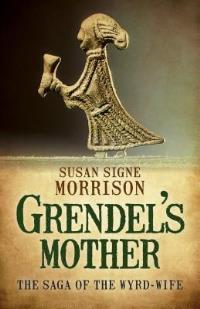 4. What do you think of Grendel's mother in the original Beowulf?
4. What do you think of Grendel's mother in the original Beowulf?
In the original poem, Grendel's Mother only appears well into the action. Her son, Grendel, is depicted as a cannibal and monster, wrecking havoc in the mead hall where the warriors gather. After he is killed by Beowulf, Grendel's Mother steals into the hall at night to retrieve her slaughtered son's severed arm and to kill in return. She takes his body back to her cave under the water, where Beowulf shows up. They have a violent battle, and she dies. For well over a century, she has been viewed as monstrous and beyond compassion. But more recently feminist views have seen her actions as understandable. Who wouldn't have sympathy for a distraught mother? There has been a popular novel by John Gardner telling Grendel's point of view called Grendel. This is where I come in. Why couldn't we see, I thought, the story from her perspective? As a feminist, I am used to seeing stories and culture from alternative points of view. So how might we see her tale with compassion and empathy? I built a backstory for her and even gave her a name, emotions, and past. By doing so, I hope I have shown how even the most rejected need to be seen from their own perspective.
5. What things do you like to do outside of reading and writing?
I love to travel. My family and I lived in London for two years and that was a fabulous experience for the children and my husband and me, especially going to the theatre and museums. I have lived in Germany off and on for about four years. Turner Classic Movies has a great fan in me--I love black and white films, including silent films. And I am a lap swimmer--any kind of swimming really. I love to walk and chat and cook with my family. The solitary nature of writing is appealing, but only if I can offset it with social conviviality.

6. Any advice or suggestions for future writers?
Stick to it! I started Grendel's Mother in 1998 and it was published in 2015. I worked on it off and off, sometimes abandoning it for years while other projects interrupted it. I also recommend writing down immediately whatever scrap of prose or verse that enters your mind. If you wake up in the middle of the night with the perfect line, you really won't remember it in the morning. It's worth jotting it down right away. And keep plugging away! It took my book almost twenty years to go from initial conception to publication. Like a plant, it took root, managed to hang on, and finally has born fruit--a novel I am proud of.
~
A Writer's Story
Susan Signe Morrison
1. What inspired you to write about Grendel's Mother?
 For years I have taught the Old English poem, Beowulf. It’s a heroic tale from a manuscript written about the year 1000, filled with monsters, dragons, and heroic warriors. There are also women: peace-weaving brides in doomed unions, victims of slavery, and even a monstrous mother. That mother really intrigued me. Why should she be condemned for avenging her son’s death, when the so-called heroic warriors do the same thing and are celebrated for it? Although I’ve written many scholarly articles and books, something about Grendel’s Mother drew my imagination. I wanted to fill in her backstory, feel her emotions, and ponder her interior landscape. That meant I had to write a historical novel. And I’m so glad I have! It’s been a long but satisfying journey.
For years I have taught the Old English poem, Beowulf. It’s a heroic tale from a manuscript written about the year 1000, filled with monsters, dragons, and heroic warriors. There are also women: peace-weaving brides in doomed unions, victims of slavery, and even a monstrous mother. That mother really intrigued me. Why should she be condemned for avenging her son’s death, when the so-called heroic warriors do the same thing and are celebrated for it? Although I’ve written many scholarly articles and books, something about Grendel’s Mother drew my imagination. I wanted to fill in her backstory, feel her emotions, and ponder her interior landscape. That meant I had to write a historical novel. And I’m so glad I have! It’s been a long but satisfying journey. 2. What is your typical writing routine?
 I usually teach two or three days a week. So, when I’m not teaching or preparing for class, I like to be at home to write creatively. My husband is at work and my children are at school. I’m there alone—except for a company of battle-hardened Danes and gold-studded peace-weavers. They mill about my mind, almost as present as real-life people. Oh, and last but not least, there is Gwen, our cheerful little corgi. She gets me up and out of my chair many times a day to let her in and out so she can bark at the evil cats that seem to plague her in our neighborhood!
I usually teach two or three days a week. So, when I’m not teaching or preparing for class, I like to be at home to write creatively. My husband is at work and my children are at school. I’m there alone—except for a company of battle-hardened Danes and gold-studded peace-weavers. They mill about my mind, almost as present as real-life people. Oh, and last but not least, there is Gwen, our cheerful little corgi. She gets me up and out of my chair many times a day to let her in and out so she can bark at the evil cats that seem to plague her in our neighborhood! I might add that when I first started this book, I would repair to a local university library to write. My daughter was 2 at the time (now she’s in college) and, though she had a babysitter, she wanted to watch me write. As anyone who tries to write with a two-year-old looking on, the writing never gets done! Here’s a photo of my Roget’s Thesaurus, well-thumbed since I used it frequently while crafting my text.
I might add that when I first started this book, I would repair to a local university library to write. My daughter was 2 at the time (now she’s in college) and, though she had a babysitter, she wanted to watch me write. As anyone who tries to write with a two-year-old looking on, the writing never gets done! Here’s a photo of my Roget’s Thesaurus, well-thumbed since I used it frequently while crafting my text.3. Who are your favorite authors and books?
A key book for me is A. S. Byatt’s Possession—as it is for so many writers and readers, I imagine. It’s got romance, history, and mystery—who could ask for anything more? I’ve loved Charles Dickens and Jane Austen—writers of novels you just lose yourself in and become more real than so-called “reality.” And I love mysteries by Agatha Christie, Alexander McCall Smith, and Patricia Wentworth. As for medieval books, after Beowulf, I highly recommend two books by medieval women. First, the 12th century Marie de France whose short romances called lais are indispensable for anyone who loves romance today. She even has a werewolf story. And Christine de Pizan’s The Book of the City of Ladies is as revolutionary for women’s rights today as when it was written—in 1405-1405. You can read about these medieval women in another book of mine, A Medieval Woman’s Companion: Women Lives in the European Middle Ages (Oxford: Oxbow Books, 2016). Finally, Geoffrey Chaucer, whose irony and humor continually astound me, even on the twentieth reading.
 4. What do you think of Grendel's mother in the original Beowulf?
4. What do you think of Grendel's mother in the original Beowulf? In the original poem, Grendel's Mother only appears well into the action. Her son, Grendel, is depicted as a cannibal and monster, wrecking havoc in the mead hall where the warriors gather. After he is killed by Beowulf, Grendel's Mother steals into the hall at night to retrieve her slaughtered son's severed arm and to kill in return. She takes his body back to her cave under the water, where Beowulf shows up. They have a violent battle, and she dies. For well over a century, she has been viewed as monstrous and beyond compassion. But more recently feminist views have seen her actions as understandable. Who wouldn't have sympathy for a distraught mother? There has been a popular novel by John Gardner telling Grendel's point of view called Grendel. This is where I come in. Why couldn't we see, I thought, the story from her perspective? As a feminist, I am used to seeing stories and culture from alternative points of view. So how might we see her tale with compassion and empathy? I built a backstory for her and even gave her a name, emotions, and past. By doing so, I hope I have shown how even the most rejected need to be seen from their own perspective.
5. What things do you like to do outside of reading and writing?
I love to travel. My family and I lived in London for two years and that was a fabulous experience for the children and my husband and me, especially going to the theatre and museums. I have lived in Germany off and on for about four years. Turner Classic Movies has a great fan in me--I love black and white films, including silent films. And I am a lap swimmer--any kind of swimming really. I love to walk and chat and cook with my family. The solitary nature of writing is appealing, but only if I can offset it with social conviviality.

6. Any advice or suggestions for future writers?
Stick to it! I started Grendel's Mother in 1998 and it was published in 2015. I worked on it off and off, sometimes abandoning it for years while other projects interrupted it. I also recommend writing down immediately whatever scrap of prose or verse that enters your mind. If you wake up in the middle of the night with the perfect line, you really won't remember it in the morning. It's worth jotting it down right away. And keep plugging away! It took my book almost twenty years to go from initial conception to publication. Like a plant, it took root, managed to hang on, and finally has born fruit--a novel I am proud of.
Published on June 18, 2016 05:00
June 16, 2016
An Undisturbed Peace by Mary Glickman, a new retelling of the Trail of Tears
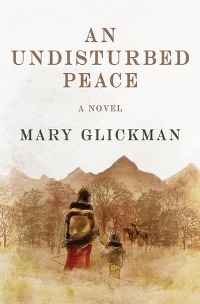 Set in the mountains and backwoods regions of the southeastern United States in the 1820s and ‘30s, this novel centers on intercultural prejudice, a great injustice, and compassion. It offers a poignant retelling of the lead-up to the Trail of Tears while also evoking a little-known aspect of Jewish-American history.
Set in the mountains and backwoods regions of the southeastern United States in the 1820s and ‘30s, this novel centers on intercultural prejudice, a great injustice, and compassion. It offers a poignant retelling of the lead-up to the Trail of Tears while also evoking a little-known aspect of Jewish-American history. When Abrahan Sassaporta, an itinerant peddler, falls in love with Marian of the foothills, a beautiful, defiantly independent Cherokee woman living alone in a cabin on his trading route, he becomes personally entangled in a tragic tale set in motion twenty years earlier. Marian’s parents, believing that alliances with white settlers would secure the Cherokees’ future, had sent her to London for a year and sought her marriage to a white neighbor, but Marian had other plans. Her shared past with a black slave named Jacob – one involving forbidden love, murder, and betrayal – is revealed bit by bit.
Abe inspires empathy for his open-minded nature, and because he’s trapped in debt to his uncle Isadore, but he’s naïve in several ways. He believes his passion for Marian will eventually be returned in full, and that the freedom he finds in his new country will be granted to her people as well. Both the Jews and Cherokee have faced persecution, and Abe sees parallels between their cultures. Not surprisingly, given the federal government’s greed for Cherokee land, the future turns out differently than he hopes.
Mary Glickman paints a resplendent portrait of the unspoiled wilderness of North Carolina, Tennessee, and Georgia, and her prose has a crystalline purity that echoes the cadence of fiction written at that time. One minor mistake was noted (a $20 bill), but overall, this is historical fiction well told. The well-rounded characters exude strength and grace, and the story brings history alive with powerful impact.
An Undisturbed Peace was published by Open Road in 2016 ($16.99, trade pb, 378pp, or $7.99 ebook). This review first appeared in May's Historical Novels Review. I've since bought another of Mary Glickman's novels.
Published on June 16, 2016 06:26
June 11, 2016
Elizabeth Fremantle's The Girl in the Glass Tower: Arbella Stuart's courageous and tragic story
“It was the sheer size of the windows that made the rooms at Hardwick so impossible to heat… Grandmother seemed impervious to the chill and could not hide her delight at her vast shimmering rectangles of glass, fit for a cathedral, the talk of all Derbyshire.”
 Hardwick Hall, Derbyshire (photo by Mark Johnson)
Hardwick Hall, Derbyshire (photo by Mark Johnson)
Hardwick Hall, more glass than wall: so went a common saying about this large Elizabethan country house. Built at a time when glass was exceptionally expensive, it was the pride of Bess of Hardwick, Countess of Shrewsbury, the richest woman in England after the Queen herself. If you look carefully in the photo above, you can see her initials ("ES," for Elizabeth Shrewsbury) atop many of the towers; she knew how to stake her claim. It's now a National Trust property, and Mark and I paid a visit to Hardwick Hall and its grounds on our trip to England in 2014. Portraits of its former residents, the country's monarchs, and other English notables grace the interior walls. If you get the opportunity to see it in person, go!
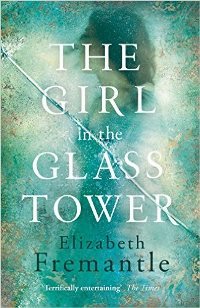 Elizabeth Fremantle’s The Girl in the Glass Tower delves into the life story of another Elizabethan woman who resided there, but whose story was more tragedy than triumph: Lady Arbella Stuart, granddaughter of both Bess of Hardwick and Margaret Douglas (Henry VIII’s niece). Though she's a minor figure now, for much of her lifetime Arbella was considered a likely successor to Elizabeth I. Her royal lineage proved to be a terrible burden. Other parties wrought conspiracies around her for their own ends, and her long-lived grandmother, Bess, kept her under tight control, ostensibly for her own protection. While some of Arbella’s decisions cost her dearly, Fremantle shows in no uncertain terms how her behavior was a natural result of the restrictive environment she endured.
Elizabeth Fremantle’s The Girl in the Glass Tower delves into the life story of another Elizabethan woman who resided there, but whose story was more tragedy than triumph: Lady Arbella Stuart, granddaughter of both Bess of Hardwick and Margaret Douglas (Henry VIII’s niece). Though she's a minor figure now, for much of her lifetime Arbella was considered a likely successor to Elizabeth I. Her royal lineage proved to be a terrible burden. Other parties wrought conspiracies around her for their own ends, and her long-lived grandmother, Bess, kept her under tight control, ostensibly for her own protection. While some of Arbella’s decisions cost her dearly, Fremantle shows in no uncertain terms how her behavior was a natural result of the restrictive environment she endured.
Half of the novel comprises Arbella’s memoir, written in Jacobean times while incarcerated in the Tower of London, where she looks out on the courtyard from above, recollecting her too-short life, which comprises constant reminders of “the impossibility of freedom.” Her mother died when she was a child, and her female role models are few. Her aunt, Mary Queen of Scots, is executed as a traitor. An earlier potential successor to Elizabeth’s throne, the late Katherine Grey, had married against the Queen’s wishes and paid a great price.
 Hardwick Hall and gardens (photo by Mark Johnson)
Hardwick Hall and gardens (photo by Mark Johnson)
The stories of these women are threaded through the novel’s melancholy atmosphere; they haunt Arbella and remind her of their fate, which could also be hers.
Raised by Bess of Hardwick to be a future queen, Arbella grows up too aware of her position, leading to missteps that make her appear haughty. In this world of plots and counterplots political and religious, she does have loyal servants and loving relatives, but not everyone – family included – has her best interests at heart.
 Arbella Stuart, later in life
Arbella Stuart, later in life
(public domain)Alternating sections introduce Aemilia Lanyer, called Ami, a talented poet banished from court because King James didn’t approve of her feminist writing. Left impoverished after her spendthrift husband’s death, and determined to conceal the identity of her son Hal’s true father, Ami contends with a treacherously nosy neighbor and unwanted advances from her landlord (I particularly enjoyed how the subplot involving these characters turned out). The two women's tales are nicely harmonized. Their lives intersect at a few critical moments, and it’s only after Arbella’s death, and she reads her memoir, that Ami truly knows the person who Arbella was.
The Girl in the Glass Tower is a deep, intimate exploration of a royal woman’s life. It was published by Michael Joseph (Penguin Random House UK) on June 2nd in hardback (£14.99, 453pp) and ebook.
 Hardwick Hall, Derbyshire (photo by Mark Johnson)
Hardwick Hall, Derbyshire (photo by Mark Johnson)Hardwick Hall, more glass than wall: so went a common saying about this large Elizabethan country house. Built at a time when glass was exceptionally expensive, it was the pride of Bess of Hardwick, Countess of Shrewsbury, the richest woman in England after the Queen herself. If you look carefully in the photo above, you can see her initials ("ES," for Elizabeth Shrewsbury) atop many of the towers; she knew how to stake her claim. It's now a National Trust property, and Mark and I paid a visit to Hardwick Hall and its grounds on our trip to England in 2014. Portraits of its former residents, the country's monarchs, and other English notables grace the interior walls. If you get the opportunity to see it in person, go!
 Elizabeth Fremantle’s The Girl in the Glass Tower delves into the life story of another Elizabethan woman who resided there, but whose story was more tragedy than triumph: Lady Arbella Stuart, granddaughter of both Bess of Hardwick and Margaret Douglas (Henry VIII’s niece). Though she's a minor figure now, for much of her lifetime Arbella was considered a likely successor to Elizabeth I. Her royal lineage proved to be a terrible burden. Other parties wrought conspiracies around her for their own ends, and her long-lived grandmother, Bess, kept her under tight control, ostensibly for her own protection. While some of Arbella’s decisions cost her dearly, Fremantle shows in no uncertain terms how her behavior was a natural result of the restrictive environment she endured.
Elizabeth Fremantle’s The Girl in the Glass Tower delves into the life story of another Elizabethan woman who resided there, but whose story was more tragedy than triumph: Lady Arbella Stuart, granddaughter of both Bess of Hardwick and Margaret Douglas (Henry VIII’s niece). Though she's a minor figure now, for much of her lifetime Arbella was considered a likely successor to Elizabeth I. Her royal lineage proved to be a terrible burden. Other parties wrought conspiracies around her for their own ends, and her long-lived grandmother, Bess, kept her under tight control, ostensibly for her own protection. While some of Arbella’s decisions cost her dearly, Fremantle shows in no uncertain terms how her behavior was a natural result of the restrictive environment she endured. Half of the novel comprises Arbella’s memoir, written in Jacobean times while incarcerated in the Tower of London, where she looks out on the courtyard from above, recollecting her too-short life, which comprises constant reminders of “the impossibility of freedom.” Her mother died when she was a child, and her female role models are few. Her aunt, Mary Queen of Scots, is executed as a traitor. An earlier potential successor to Elizabeth’s throne, the late Katherine Grey, had married against the Queen’s wishes and paid a great price.
 Hardwick Hall and gardens (photo by Mark Johnson)
Hardwick Hall and gardens (photo by Mark Johnson)The stories of these women are threaded through the novel’s melancholy atmosphere; they haunt Arbella and remind her of their fate, which could also be hers.
Raised by Bess of Hardwick to be a future queen, Arbella grows up too aware of her position, leading to missteps that make her appear haughty. In this world of plots and counterplots political and religious, she does have loyal servants and loving relatives, but not everyone – family included – has her best interests at heart.
 Arbella Stuart, later in life
Arbella Stuart, later in life(public domain)Alternating sections introduce Aemilia Lanyer, called Ami, a talented poet banished from court because King James didn’t approve of her feminist writing. Left impoverished after her spendthrift husband’s death, and determined to conceal the identity of her son Hal’s true father, Ami contends with a treacherously nosy neighbor and unwanted advances from her landlord (I particularly enjoyed how the subplot involving these characters turned out). The two women's tales are nicely harmonized. Their lives intersect at a few critical moments, and it’s only after Arbella’s death, and she reads her memoir, that Ami truly knows the person who Arbella was.
The Girl in the Glass Tower is a deep, intimate exploration of a royal woman’s life. It was published by Michael Joseph (Penguin Random House UK) on June 2nd in hardback (£14.99, 453pp) and ebook.
Published on June 11, 2016 06:30
June 9, 2016
A woman's Klondike adventure: Ashley E. Sweeney's Eliza Waite
 The prologue of Ashley E. Sweeney’s debut novel shows her heroine embarking on a major life change. In Seattle of 1898, Eliza Waite finds an unused ticket in the street and boards a stern-wheeler bound for the Klondike, dressed in her late husband’s threadbare clothing and with $45 in her purse.
The prologue of Ashley E. Sweeney’s debut novel shows her heroine embarking on a major life change. In Seattle of 1898, Eliza Waite finds an unused ticket in the street and boards a stern-wheeler bound for the Klondike, dressed in her late husband’s threadbare clothing and with $45 in her purse.It’s no ordinary woman who would travel alone to Alaska, a place where men reportedly outnumber women a hundred to one, but the circumstances that Eliza previously endured give her the courage to take this unusual step. What’s more, they convince her that she can succeed in her goal: to run a bakery.
Following the introduction, the book is evenly split into two sections – before and after – which illustrate different aspects of women’s pioneering experiences in the Pacific Northwest. The contemplative, slower-moving first half chronicles the year and more that Eliza, solidly built and bookish, had spent in an isolated cabin on Cypress Island, in Washington State’s San Juan Islands, after losing her son (much beloved) and minister husband (not so much) in an epidemic.
Eliza establishes a rhythm for the daily chores while remembering her earlier life and enduring a burden of heavy grief. Kate Chopin, a Missourian like herself, gives her inspiration through her writing and actions. Abundant with details on life on a remote island – fishing, canning, plant-gathering, even recipes – the writing sometimes falls into repetitive patterns (of the form “she did this, she did that”) while is beautifully lyrical in others:
“She stares through the uncurtained window above the chipped enamel sink and cannot see through the dense fog that descends over Cypress. Every shade of grey colors the landscape, from steely clouds that conceal the daylight to the vague cinereous mound or Orcas rising out of the dusky sea.”
In the second half, Eliza establishes her shop in Skagway, a Gold Rush base camp barely a year old, forms a close friendship with a local madam (one of the novel’s most enjoyable aspects), and gets reacquainted with her feminine nature while avoiding romance – at least until she’s ready to approach it on her own terms. Sweeney avoids artificial drama, instead focusing on Eliza’s blossoming self-image and how she finds a home in the energetic, rough-hewn mining town, which gives those with a painful past a place to make their fortunes or die trying.
Most of the novel is written in third person; the story also dips occasionally into Eliza’s first-person viewpoint, via her thoughts and short diary-style notes that begin each chapter. This further illustrates her practical mindset. This is a satisfying read, one which brings to life a short-lived time in American history, and which acknowledges and celebrates the many facets of womanhood.
Ashley E. Sweeney's Eliza Waite was published by She Writes Press in May ($16.95 trade pb/$9.95 ebook, 329pp, including period recipes.)
Published on June 09, 2016 05:00
June 7, 2016
Giveaway for Amy Snow by Tracy Rees, the new US edition
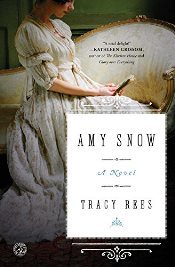 Last August, I reviewed Tracy Rees' debut novel, Amy Snow, a delightful Victorian-era quest-adventure about an heiress who dies young, her orphaned protégée, and a mysterious trail of letters. At the end, I'd written: "For now you'll have to get it from the UK, but I hope a US publisher will pick it up."
Last August, I reviewed Tracy Rees' debut novel, Amy Snow, a delightful Victorian-era quest-adventure about an heiress who dies young, her orphaned protégée, and a mysterious trail of letters. At the end, I'd written: "For now you'll have to get it from the UK, but I hope a US publisher will pick it up." Well, that has happened. The American edition is published by Simon & Schuster today. They sent a copy to me in the mail, and since I've already read it from the UK edition and can recommend it, this one is up for grabs to another US reader.
For a chance to win, please fill out the form below; deadline this Saturday, June 11th. One entry per US household; void where prohibited. Good luck!
Loading...
Published on June 07, 2016 04:30
May 31, 2016
Belonging by Umi Sinha, a saga of British India and family secrets
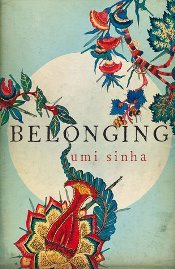 In this touching and lithely written debut novel, the gaps separating the generations are wide, but their shared roots in the British Raj and desire for understanding pull them back together. The form it takes is unusual for a family saga – three separate narratives, related in alternating chapters – and this works to heighten immediacy.
In this touching and lithely written debut novel, the gaps separating the generations are wide, but their shared roots in the British Raj and desire for understanding pull them back together. The form it takes is unusual for a family saga – three separate narratives, related in alternating chapters – and this works to heighten immediacy. The opening scene hits with tremendous impact. In Peshawar, India, in 1907, 12-year-old Lila Langdon secretly observes her mother’s unveiling of an exquisitely embroidered tablecloth at a large gathering for her father Henry’s 50th birthday. The night ends in tragedy; Lila is shipped to her great-aunt Mina’s house on the Sussex Downs, where she grows up in self-enforced silence, alienated from the lively voices and comforting smells of her Indian homeland. She forms a connection with her neighbor’s schoolmate, a Sikh boy named Jagjit, although they’re discouraged from growing too close.
Her voice interweaves with that of Henry, writing in his diary as a motherless boy growing up in Bengal under his distant father’s care, and of Cecily, her grandmother, who neither she nor Henry knew. In letters to her twin sister, Mina, Cecily describes her excitement and uncertainty about traveling to India in 1855 to wed an older man, Major Arthur Langdon. Her later notes reveal her discomfort with marriage and the increasing danger she and Arthur find themselves in, as anti-British sentiment rises.
The legacy of long-hidden mysteries lingers throughout: did Cecily die in childbirth, as Henry grows up believing? What devastating image did the tablecloth depict? The answers are skillfully revealed in time, yet this is much more than a tale of family secrets. Belonging illustrates the complexity of Anglo-Indian relationships in colonial India and England, Indian soldiers’ valiant WWI service, and the pain of dislocation and unattainable love. Reading it is a deeply felt, mesmerizing experience.
Belonging, published by Myriad Editions in trade paperback (£8.99), is distributed in North America by Trafalgar Square ($14.95/C$17.95). It's well worth seeing out. This review first appeared in May's Historical Novels Review.
Published on May 31, 2016 11:00
May 26, 2016
When everything old is new again: Marlene Dietrich’s lasting impression, a guest post by C.W. Gortner
Within his growing oeuvre of historical novels, C.W. Gortner is known for depicting the intimate life stories of legendary women from the past. Below he shares details about the life and enduring legacy of his latest heroine: Marlene Dietrich.
~
When Everything Old is New Again: Marlene Dietrich’s Lasting Impression C. W. Gortner
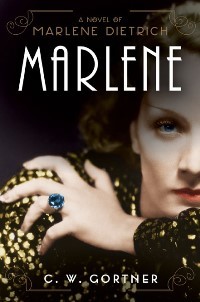 Most of us know her look: that sultry, half-lidded gaze and crimson-lipped mouth, the cigarette eternally smoldering in her hand, the stark black-and-white tuxedo. Marlene Dietrich burst into public awareness in the United States in 1930, with her first film for Paramount Pictures, Morocco. She played a chanteuse fleeing an obscure past, who finds herself in North Africa during the Rif War, where she captures the careless attention of a Foreign Legionnaire, played by handsome Gary Cooper. Seen through today’s eyes, the film might appear dated, even if Marlene remains ravishingly modern, but at the time, the movie was a smash box-office success and roused international controversy, for in it, Dietrich performs a song dressed in a tailcoat tuxedo and kisses another woman during her cabaret act.
Most of us know her look: that sultry, half-lidded gaze and crimson-lipped mouth, the cigarette eternally smoldering in her hand, the stark black-and-white tuxedo. Marlene Dietrich burst into public awareness in the United States in 1930, with her first film for Paramount Pictures, Morocco. She played a chanteuse fleeing an obscure past, who finds herself in North Africa during the Rif War, where she captures the careless attention of a Foreign Legionnaire, played by handsome Gary Cooper. Seen through today’s eyes, the film might appear dated, even if Marlene remains ravishingly modern, but at the time, the movie was a smash box-office success and roused international controversy, for in it, Dietrich performs a song dressed in a tailcoat tuxedo and kisses another woman during her cabaret act.
In that moment, Marlene defined herself as more than a new face brought to Hollywood to rival MGM’s reigning queen, Greta Garbo. She exploded into public consciousness as an intoxicating, unconventional force — a femme fatale who ignored boundaries, dressing like a man while unmistakably all woman, erotically charged yet never out of control. This was a movie star unlike any seen before: a seductress who took what she wanted, without apology or regret.
In the years since Marlene’s death, that combustible mixture of aggression and indifference has become a legacy. We may not recognize it today, especially if we’re not of her era, but Marlene Dietrich has continued to influence our pop culture, her brand re-fitted to suit modern whims. Madonna famously appropriated Marlene’s masculine attire and the art of giving good face in her MTV videos for “Vogue” and “Express Yourself.” She even donned the tuxedo, top hat and monocle – all iconic Dietrich accessories. Before her, David Bowie channeled Marlene’s white suit and rapacious presence for his Thin White Duke period, freely admitting he’d been inspired by her image during his time in Berlin. Grace Jones appropriated her dangling cigarette and sexual androgyny, adding a ferocious bite. Bob Fosse was inspired by Marlene’s provocative barrel straddle in The Blue Angel for Liza Minnelli’s “Mein Herr” number in Cabaret.
Sharon Stone defied misogyny by parting her legs under a white slip-on dress, evoking the power of unabashed feminine mystique in Basic Instinct, which owes its cues to the predilections of Dietrich at her apex. And the list goes on. Dietrich was more than a movie star, the quintessential face of 1930s glamour before the iron fist of censorship came slamming down, maiming her career. She awoke our nascent sexuality in ways not seen before. Her casual air even as she sauntered about in comfort-defying ensembles, her desire for love without embellishment or entanglement, and her enigmatic personality, as unconventional as the rest of her, stirred our fantasies—and our bodies. She exuded a feline insouciance we secretly admired; she slept where she liked and left us without explanation. She purred rather than roared, but her claws were just as sharp. A lioness on stage, her heroism during World War II, when she set out to give the Nazis a taste of her disgust, proved there was far more to the lady than anyone suspected, though of course it was there all the time, if anyone had cared to look.
When we use the word “legendary," Dietrich fits the bill. For what is a legend if not an enduring mythology that we continue to re-invent? No matter how much times passes, she’s still with us—in a smear of red lipstick after a torrid night, a seam on a stocking or tattered feather boa; in sequins and spangles, and crisp Bowler hats. In bowties and black tie and the ties around our wrists.
Marlene once famously said, “Think twice before burdening a friend with a secret.” She herself took many of her secrets with her to her grave, but the biggest secret of all is how she’s managed to transcend death itself to continue to inspire, titillate, amaze, and seduce us.
She probably never intended it, but she certainly would have enjoyed it.
~
C.W. Gortner’s new novel Marlene was published on Tuesday, May 24th, by William Morrow. Learn more at: www.cwgortner.com.
~
When Everything Old is New Again: Marlene Dietrich’s Lasting Impression C. W. Gortner
 Most of us know her look: that sultry, half-lidded gaze and crimson-lipped mouth, the cigarette eternally smoldering in her hand, the stark black-and-white tuxedo. Marlene Dietrich burst into public awareness in the United States in 1930, with her first film for Paramount Pictures, Morocco. She played a chanteuse fleeing an obscure past, who finds herself in North Africa during the Rif War, where she captures the careless attention of a Foreign Legionnaire, played by handsome Gary Cooper. Seen through today’s eyes, the film might appear dated, even if Marlene remains ravishingly modern, but at the time, the movie was a smash box-office success and roused international controversy, for in it, Dietrich performs a song dressed in a tailcoat tuxedo and kisses another woman during her cabaret act.
Most of us know her look: that sultry, half-lidded gaze and crimson-lipped mouth, the cigarette eternally smoldering in her hand, the stark black-and-white tuxedo. Marlene Dietrich burst into public awareness in the United States in 1930, with her first film for Paramount Pictures, Morocco. She played a chanteuse fleeing an obscure past, who finds herself in North Africa during the Rif War, where she captures the careless attention of a Foreign Legionnaire, played by handsome Gary Cooper. Seen through today’s eyes, the film might appear dated, even if Marlene remains ravishingly modern, but at the time, the movie was a smash box-office success and roused international controversy, for in it, Dietrich performs a song dressed in a tailcoat tuxedo and kisses another woman during her cabaret act.In that moment, Marlene defined herself as more than a new face brought to Hollywood to rival MGM’s reigning queen, Greta Garbo. She exploded into public consciousness as an intoxicating, unconventional force — a femme fatale who ignored boundaries, dressing like a man while unmistakably all woman, erotically charged yet never out of control. This was a movie star unlike any seen before: a seductress who took what she wanted, without apology or regret.
In the years since Marlene’s death, that combustible mixture of aggression and indifference has become a legacy. We may not recognize it today, especially if we’re not of her era, but Marlene Dietrich has continued to influence our pop culture, her brand re-fitted to suit modern whims. Madonna famously appropriated Marlene’s masculine attire and the art of giving good face in her MTV videos for “Vogue” and “Express Yourself.” She even donned the tuxedo, top hat and monocle – all iconic Dietrich accessories. Before her, David Bowie channeled Marlene’s white suit and rapacious presence for his Thin White Duke period, freely admitting he’d been inspired by her image during his time in Berlin. Grace Jones appropriated her dangling cigarette and sexual androgyny, adding a ferocious bite. Bob Fosse was inspired by Marlene’s provocative barrel straddle in The Blue Angel for Liza Minnelli’s “Mein Herr” number in Cabaret.
Sharon Stone defied misogyny by parting her legs under a white slip-on dress, evoking the power of unabashed feminine mystique in Basic Instinct, which owes its cues to the predilections of Dietrich at her apex. And the list goes on. Dietrich was more than a movie star, the quintessential face of 1930s glamour before the iron fist of censorship came slamming down, maiming her career. She awoke our nascent sexuality in ways not seen before. Her casual air even as she sauntered about in comfort-defying ensembles, her desire for love without embellishment or entanglement, and her enigmatic personality, as unconventional as the rest of her, stirred our fantasies—and our bodies. She exuded a feline insouciance we secretly admired; she slept where she liked and left us without explanation. She purred rather than roared, but her claws were just as sharp. A lioness on stage, her heroism during World War II, when she set out to give the Nazis a taste of her disgust, proved there was far more to the lady than anyone suspected, though of course it was there all the time, if anyone had cared to look.
When we use the word “legendary," Dietrich fits the bill. For what is a legend if not an enduring mythology that we continue to re-invent? No matter how much times passes, she’s still with us—in a smear of red lipstick after a torrid night, a seam on a stocking or tattered feather boa; in sequins and spangles, and crisp Bowler hats. In bowties and black tie and the ties around our wrists.
Marlene once famously said, “Think twice before burdening a friend with a secret.” She herself took many of her secrets with her to her grave, but the biggest secret of all is how she’s managed to transcend death itself to continue to inspire, titillate, amaze, and seduce us.
She probably never intended it, but she certainly would have enjoyed it.
~
C.W. Gortner’s new novel Marlene was published on Tuesday, May 24th, by William Morrow. Learn more at: www.cwgortner.com.
Published on May 26, 2016 07:00
May 24, 2016
Interview with Donna Russo Morin, author of Portrait of a Conspiracy
In Florence, Italy, on 26 April 1478, members of the Pazzi family and their allies plotted to assassinate the powerful Lorenzo de' Medici and his brother, Giuliano, in full public view within the city's magnificent Duomo (cathedral). In the case of Giuliano, they succeeded. First in a new series, Donna Russo Morin's Portrait of a Conspiracy (Diversion Books, May) uses this historical event and its deadly aftermath as a springboard for a multifaceted thriller about a dangerous painting, a secret sisterhood of women artists, their plan to help a missing friend, and the resounding power of art. I enjoyed the book very much and hope you'll enjoy the following author interview.
~
How did you come up with the novel’s premise?
It really was a convergence of events and ideas. I was finishing work on my 2012 release, The King’s Agent, which features a true to life Indiana Jones of 15th-century Italy that included one of his actual dear friends, Michelangelo. I found myself longing to write more about art and artists.
At the same time, I was going through one of the most personally traumatic periods of my life. If not for a group of truly dedicated, loyal, and supportive women, I’m not sure if I would have had the strength to continue. It gave me a clarity of vision into the power of women united. Female relationships can be so much more intimate than those of men. But they can also be hard on each other. This book, the whole trilogy in truth, is nothing if not an homage to that power and the complexities of female relationships.
The two thoughts connected, and Da Vinci’s Disciples were born.
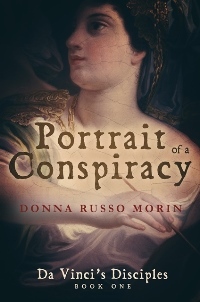 The scene of Giuliano de’ Medici’s assassination is full of cinematic action and a high level of tension. What was the experience like for you as an author, choreographing such a terrible, iconic moment on the page?
The scene of Giuliano de’ Medici’s assassination is full of cinematic action and a high level of tension. What was the experience like for you as an author, choreographing such a terrible, iconic moment on the page?
That assassination, the true attempt of the Pazzi family to eliminate the Medici family, is an historical event, one of the greatest conspiracies of the 15th century. I found two non-fiction books that detailed the event in great, if clinical, detail (Martines, Lauro. 2003. April Blood. London: Random House; and, Simonetta, Marcello. 2008. The Montefeltro Conspiracy. New York, NY: Doubleday).
Our job, as historical fiction writers, is always to breathe life into these clinical dissertations.
I’m very fortunate to have a very sharp, vivid mind’s eye. Once all the events are in there, my mind allows me to "see" it, almost in movie form. And, perhaps because I have an acting background, as I watch the movie I "feel" what the point-of-view character would feel. It was disturbing and possibly the hardest part to convey.
But the difficulty comes when the writer must depict all the details without the assistance of a single screen shot. Yet it needs to be fast-paced and tightly written while still conveying the enormous emotion of the event. Tight and fast-paced being critical. The moment of verbal choreography is the most challenging. IT MUST BE BIG…but with the sparsest of words. Deciding what to leave in and what to take out was the most demanding task. The event went through more than a few versions. One of the more difficult revisions my agent and I decided to make was to cut one of my favorite portions of that event. How Lorenzo de’ Medici really escaped the attack. While it is a story in itself (a scene I will probably put up on my blog at some point) it didn’t further this story, and so to serve immediacy and the aura of impending danger, it was taken out.
What were your concerns or challenges in writing about a historical figure as famous as Leonardo da Vinci?
In truth, the da Vinci depicted in Portrait of a Conspiracy is a da Vinci most people are unfamiliar with. His genius and greatness are widely known. But he was not, by any means, an "overnight sensation." He is not that old, wizened man in a portrait that is, most likely, not him. My da Vinci, is the young, questioning, experimenting, struggling, youthful da Vinci poised on the precipice of his greatness.
There were fewer restraints when writing this lesser known man; there were more places where I could theorize from my prolonged research on da Vinci, especially in terms of attitudes and opinions, personality traits and quirks. The greatest challenge was in terms of time (this is especially true in the second book). Da Vinci moved around a great deal (hence, his death in France). I needed him to be in the right places at the right times, but I squirm with playing fast and loose with such details of truth.
For the women, Leonardo’s mentorship is welcomed and important to their ongoing development as artists. Did any special mentor have a role in your writing career?
There have actually been two prominent people in the development of my craft.
The first is my sixth grade teacher, Mrs. Alfonso. She was a lovely young woman (I think we were her first class after graduating college). I was constantly writing then, silly stories about a pink pussycat who wanted to run for president and how the numbers 2 and 4 were in love, but 3 kept getting in the way. She started Story Time with Donna on Friday afternoons. When I heard the other kids laughing at my story, or saw them looking at me wide-eyed, waiting eagerly for my next word, I came to know I was meant to be a storyteller.
In the last decade, there has been one man who stands out above the rest. Writers are incredibly supportive of each other; there’s a bit of a shared survival in this crazy industry. But this man, Christopher Gortner (known as the bestselling author C. W. Gortner), has astounded me with his generosity of advice, technical tutoring, and so much more (including being there just to listen when I rage and cry about this business—and my personal life as well). He has taken me under his wing, unfurling it without hesitation; there is never-ending learning there. It is a warm and safe haven I am truly grateful for. He is my da Vinci.
 author Donna Russo MorinPortrait of a Conspiracy showcases women’s experiences, supportive friendships, and their clandestine pursuit of artistic creation, and I especially liked that the women came from a variety of social backgrounds. Did you come across any intriguing or surprising facts while you were researching women of the Italian Renaissance?
author Donna Russo MorinPortrait of a Conspiracy showcases women’s experiences, supportive friendships, and their clandestine pursuit of artistic creation, and I especially liked that the women came from a variety of social backgrounds. Did you come across any intriguing or surprising facts while you were researching women of the Italian Renaissance?
There were some surprises…the equal propensity for noblewomen to be as promiscuous as their husbands (it was true in other countries, I knew, but I didn’t expect it in Roman Catholic-dominated Florence). The line of demarcation between the classes is more sharply drawn in these women’s lives, but it did not always seem to be what they wanted, but what they had to do. And there was great prejudice within the classes as well, even those on the lowest rung.
What never ceases to surprise me as I research the periods of my books, are the common ground women of today share with women of the past. We are still struggling to achieve what we want to achieve without greater obstacles than men. We still totter with putting ourselves and our professional dreams and goals before the care and dreams and goals of our loved ones.
This backward, reflective mirror is a priceless recompense in being an historical novelist.
Were any of the women based on real-life artists?
No; in fact they are based loosely on actual women in my life, including myself. Granted, there is some blurring of characteristics—what one real woman demonstrates may be a trait of one of the other fictional women. Portrait of a Conspiracy is a study of female relationships and their ambition, the explosive and artistic Renaissance, a mystery, a thriller, and at times, a violent depiction of life in 15th-century Florence, but it is also one of the most personal stories I’ve ever written.
Ultimately, the trilogy will lead us to one of the earliest and greatest women artists of the time; it’s where the story was always meant to go.
Your admiration for Florentine history, culture, and architecture comes through vividly. What were some of your favorite locales to visit, or to write about?
Architecture is an art form in my mind, and in many others, I think. Architecture in the Renaissance was evolving at a break-neck pace, as were the other art forms. As Florence is the cradle of the Renaissance, it is filled with architectural wonders.
Brunelleschi’s Duomo, the basilica of the Santa Maria del Fiore Cathedral, is a highlight. Not only is it the factual scene of the assassination, it is a first of its kind construction, the first freestanding dome built at the time.
The Palazzo della Signoria (known now as the Palazzo Vecchio, the Old Palace) is also a favorite. As the government center, it is filled with all the secret passages and odd additions that prevailed at the time. I thoroughly enjoyed mapping out covert invasions and escapes in this building.
Although my birth name, Russo, can be traced to 9th-century Florence, I have not had the privilege of traveling there. It will remain, for now, the obsession of my pen. But the day is coming; oh, yes it is.
~
Donna Russo Morin is an award-winning of author of historical fiction. A graduate of the University of Rhode Island, she lives near the shore with her two sons, Devon and Dylan, her greatest works in progress. Donna enjoys meeting with book groups in person and via Skype chat. Visit her website at www.donnarussomorin.com, friend her on Facebook, and follow her on Twitter @DonnaRussoMorin.
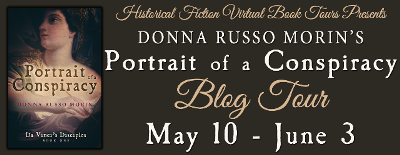
~
How did you come up with the novel’s premise?
It really was a convergence of events and ideas. I was finishing work on my 2012 release, The King’s Agent, which features a true to life Indiana Jones of 15th-century Italy that included one of his actual dear friends, Michelangelo. I found myself longing to write more about art and artists.
At the same time, I was going through one of the most personally traumatic periods of my life. If not for a group of truly dedicated, loyal, and supportive women, I’m not sure if I would have had the strength to continue. It gave me a clarity of vision into the power of women united. Female relationships can be so much more intimate than those of men. But they can also be hard on each other. This book, the whole trilogy in truth, is nothing if not an homage to that power and the complexities of female relationships.
The two thoughts connected, and Da Vinci’s Disciples were born.
 The scene of Giuliano de’ Medici’s assassination is full of cinematic action and a high level of tension. What was the experience like for you as an author, choreographing such a terrible, iconic moment on the page?
The scene of Giuliano de’ Medici’s assassination is full of cinematic action and a high level of tension. What was the experience like for you as an author, choreographing such a terrible, iconic moment on the page?That assassination, the true attempt of the Pazzi family to eliminate the Medici family, is an historical event, one of the greatest conspiracies of the 15th century. I found two non-fiction books that detailed the event in great, if clinical, detail (Martines, Lauro. 2003. April Blood. London: Random House; and, Simonetta, Marcello. 2008. The Montefeltro Conspiracy. New York, NY: Doubleday).
Our job, as historical fiction writers, is always to breathe life into these clinical dissertations.
I’m very fortunate to have a very sharp, vivid mind’s eye. Once all the events are in there, my mind allows me to "see" it, almost in movie form. And, perhaps because I have an acting background, as I watch the movie I "feel" what the point-of-view character would feel. It was disturbing and possibly the hardest part to convey.
But the difficulty comes when the writer must depict all the details without the assistance of a single screen shot. Yet it needs to be fast-paced and tightly written while still conveying the enormous emotion of the event. Tight and fast-paced being critical. The moment of verbal choreography is the most challenging. IT MUST BE BIG…but with the sparsest of words. Deciding what to leave in and what to take out was the most demanding task. The event went through more than a few versions. One of the more difficult revisions my agent and I decided to make was to cut one of my favorite portions of that event. How Lorenzo de’ Medici really escaped the attack. While it is a story in itself (a scene I will probably put up on my blog at some point) it didn’t further this story, and so to serve immediacy and the aura of impending danger, it was taken out.
What were your concerns or challenges in writing about a historical figure as famous as Leonardo da Vinci?
In truth, the da Vinci depicted in Portrait of a Conspiracy is a da Vinci most people are unfamiliar with. His genius and greatness are widely known. But he was not, by any means, an "overnight sensation." He is not that old, wizened man in a portrait that is, most likely, not him. My da Vinci, is the young, questioning, experimenting, struggling, youthful da Vinci poised on the precipice of his greatness.
There were fewer restraints when writing this lesser known man; there were more places where I could theorize from my prolonged research on da Vinci, especially in terms of attitudes and opinions, personality traits and quirks. The greatest challenge was in terms of time (this is especially true in the second book). Da Vinci moved around a great deal (hence, his death in France). I needed him to be in the right places at the right times, but I squirm with playing fast and loose with such details of truth.
For the women, Leonardo’s mentorship is welcomed and important to their ongoing development as artists. Did any special mentor have a role in your writing career?
There have actually been two prominent people in the development of my craft.
The first is my sixth grade teacher, Mrs. Alfonso. She was a lovely young woman (I think we were her first class after graduating college). I was constantly writing then, silly stories about a pink pussycat who wanted to run for president and how the numbers 2 and 4 were in love, but 3 kept getting in the way. She started Story Time with Donna on Friday afternoons. When I heard the other kids laughing at my story, or saw them looking at me wide-eyed, waiting eagerly for my next word, I came to know I was meant to be a storyteller.
In the last decade, there has been one man who stands out above the rest. Writers are incredibly supportive of each other; there’s a bit of a shared survival in this crazy industry. But this man, Christopher Gortner (known as the bestselling author C. W. Gortner), has astounded me with his generosity of advice, technical tutoring, and so much more (including being there just to listen when I rage and cry about this business—and my personal life as well). He has taken me under his wing, unfurling it without hesitation; there is never-ending learning there. It is a warm and safe haven I am truly grateful for. He is my da Vinci.
 author Donna Russo MorinPortrait of a Conspiracy showcases women’s experiences, supportive friendships, and their clandestine pursuit of artistic creation, and I especially liked that the women came from a variety of social backgrounds. Did you come across any intriguing or surprising facts while you were researching women of the Italian Renaissance?
author Donna Russo MorinPortrait of a Conspiracy showcases women’s experiences, supportive friendships, and their clandestine pursuit of artistic creation, and I especially liked that the women came from a variety of social backgrounds. Did you come across any intriguing or surprising facts while you were researching women of the Italian Renaissance? There were some surprises…the equal propensity for noblewomen to be as promiscuous as their husbands (it was true in other countries, I knew, but I didn’t expect it in Roman Catholic-dominated Florence). The line of demarcation between the classes is more sharply drawn in these women’s lives, but it did not always seem to be what they wanted, but what they had to do. And there was great prejudice within the classes as well, even those on the lowest rung.
What never ceases to surprise me as I research the periods of my books, are the common ground women of today share with women of the past. We are still struggling to achieve what we want to achieve without greater obstacles than men. We still totter with putting ourselves and our professional dreams and goals before the care and dreams and goals of our loved ones.
This backward, reflective mirror is a priceless recompense in being an historical novelist.
Were any of the women based on real-life artists?
No; in fact they are based loosely on actual women in my life, including myself. Granted, there is some blurring of characteristics—what one real woman demonstrates may be a trait of one of the other fictional women. Portrait of a Conspiracy is a study of female relationships and their ambition, the explosive and artistic Renaissance, a mystery, a thriller, and at times, a violent depiction of life in 15th-century Florence, but it is also one of the most personal stories I’ve ever written.
Ultimately, the trilogy will lead us to one of the earliest and greatest women artists of the time; it’s where the story was always meant to go.
Your admiration for Florentine history, culture, and architecture comes through vividly. What were some of your favorite locales to visit, or to write about?
Architecture is an art form in my mind, and in many others, I think. Architecture in the Renaissance was evolving at a break-neck pace, as were the other art forms. As Florence is the cradle of the Renaissance, it is filled with architectural wonders.
Brunelleschi’s Duomo, the basilica of the Santa Maria del Fiore Cathedral, is a highlight. Not only is it the factual scene of the assassination, it is a first of its kind construction, the first freestanding dome built at the time.
The Palazzo della Signoria (known now as the Palazzo Vecchio, the Old Palace) is also a favorite. As the government center, it is filled with all the secret passages and odd additions that prevailed at the time. I thoroughly enjoyed mapping out covert invasions and escapes in this building.
Although my birth name, Russo, can be traced to 9th-century Florence, I have not had the privilege of traveling there. It will remain, for now, the obsession of my pen. But the day is coming; oh, yes it is.
~
Donna Russo Morin is an award-winning of author of historical fiction. A graduate of the University of Rhode Island, she lives near the shore with her two sons, Devon and Dylan, her greatest works in progress. Donna enjoys meeting with book groups in person and via Skype chat. Visit her website at www.donnarussomorin.com, friend her on Facebook, and follow her on Twitter @DonnaRussoMorin.

Published on May 24, 2016 05:30



